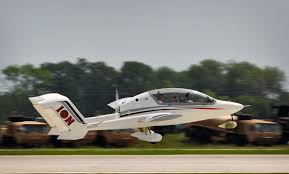Propellers, jet engines, rockets, helicopter blades; they’re all valid choices for taking to the skies. But what if there was a way to fly without any of these propulsion mechanisms? Scientists may have just found the answer to this problem, as a newly designed ion-powered airplane may soon be in production.
Science News reports on the proposed ionic wind aircraft. The results of several experiments conducted by MIT researchers were published in Nature, explaining the theory behind the craft and showing off 10 indoor test flights to prove its validity.
The plane flies using an electric field generator. By forcing the atoms in the air to collide with electrons, it positively charges the air around the craft. This forces it to move in a single direction behind the plane towards a negatively charged wire, in turn propelling it forward and keeping it afloat.
At present, the small craft weighs less than 10 lbs and runs almost completely silently. The practical applications for such a plane would be vast, as would the environmental opportunities. Rather than using huge amounts of petroleum for flying, an ionic wind aircraft would merely need a battery to recharge.
The practical problem with such a design was assumed to be weight-related. Given the necessary power required to create a large enough wind to fly an airplane, most assumed such technology would be impossible to achieve, all experiments turning up unsuccessful until this point.
While it would likely be some time before the switch to ionic power at every airport, these experiments conclusively proved that it is possible at the very least. This was all due to the chief researcher, Steven Barrett, who conducted the tests. He and his team calculated the optimal design for an ion-powered airplane and simply built what they came up with, minimizing factors like weight and maximizing its aerodynamics.
This wasn’t a simple process, of course. The team came up with numerous failed designs before finding the one that worked, conducting multiple tests to try and improve upon the unexpected deficiencies in the previous planes. After much tinkering, their current successful plane came into being.
Despite only flying for twelve seconds at a time, this new method of flight seems quite promising. While it’s nowhere near ready for a manned flight or even a human-sized plane, continued experimentation with this technology could lead to startling new advances in the field of aeronautics in no time at all.






